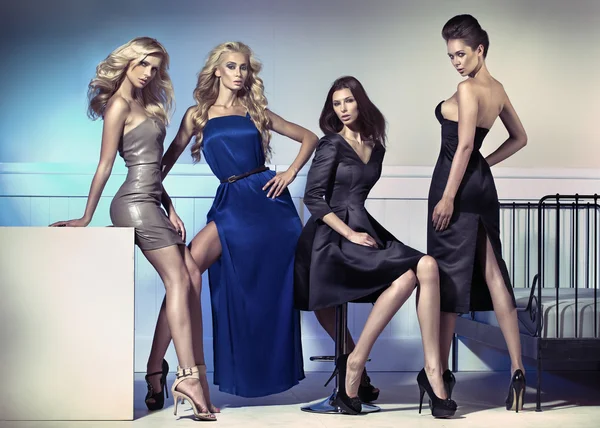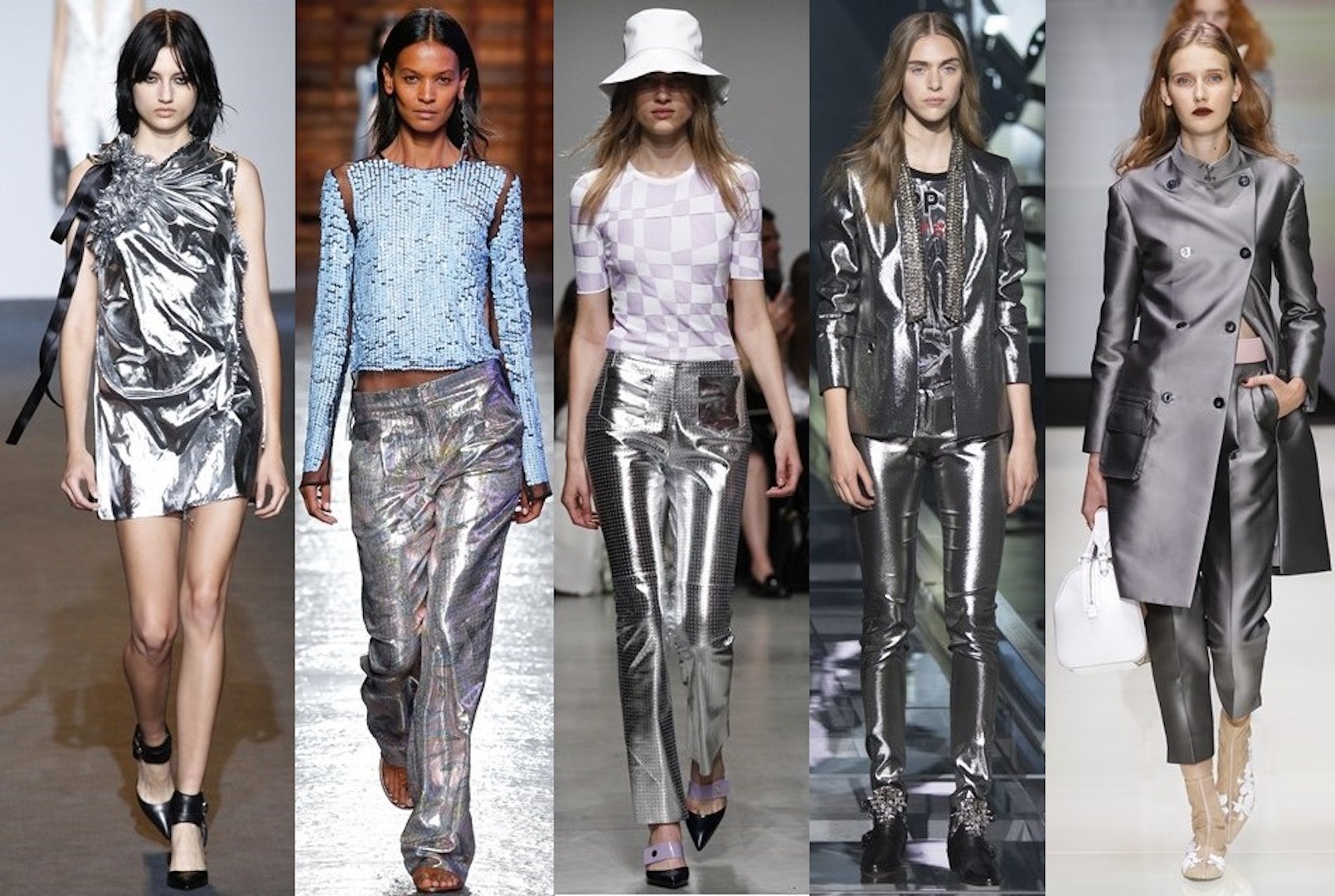Fashion Fabric Types - Unlocking Their Importance
Discover why understanding fashion fabric types is crucial for style. Explore the significance of fabric textures in fashion.

When it comes to Fashion Fabric Types, the fabric is the unsung hero that often doesn't receive the recognition it deserves. Yet, the choice of fabric is paramount in determining the look, feel, and functionality of a garment. In this article, we will delve into the world of fashion fabric types, unlocking their significance in the world of style and design.
Cotton - The Versatile Classic Fashion Fabric Types
Cotton is a beloved fabric known for its breathability, comfort, and versatility. It's used in everything from t-shirts to jeans to?summer dresses fashion. Cotton's absorbent nature makes it ideal for warm weather, as it wicks away moisture from the body, keeping the wearer cool and dry.
Silk - The Epitome of Elegance Fashion Fabric Types
Silk is synonymous with luxury and elegance. Its smooth, lustrous surface and natural sheen make it a popular choice for eveningwear, lingerie, and formal attire. The lightweight nature of silk drapes beautifully, adding a touch of sophistication to any outfit.
Wool - Warmth and Texture Fashion Fabric Types
Wool is prized for its warmth and natural insulating properties. It's commonly used in sweaters, suits, and outerwear. Wool can be fine and soft or coarse and rugged, making it suitable for a wide range of fashion styles.
Linen - The Cool and Crisp Choice
Linen is a go-to fabric for hot, humid climates. Its breathability and moisture-wicking properties keep the wearer feeling cool and fresh. While linen wrinkles easily, many appreciate the relaxed and casual look it imparts.
Denim - The Rugged Staple
Denim is synonymous with casual, durable fashion. It's a sturdy cotton twill fabric often used for jeans and jackets. Denim's durability and rugged texture make it a fashion favorite for everyday wear.
Velvet - Opulence and Luxury
Velvet is a plush, soft fabric that exudes opulence. It's often used in formal attire and evening gowns due to its rich texture and ability to catch and reflect light. Velvet's sumptuousness adds a touch of luxury to any outfit.
Polyester - The Versatile Synthetic
Polyester is a synthetic fabric known for its versatility. It can mimic the feel and appearance of natural fibers while offering durability and resistance to wrinkles.?Polyester fashion?is often blended with other fabrics to enhance their properties.
Chiffon - Light as Air
Chiffon is a lightweight, sheer fabric that adds a delicate touch to clothing. It's commonly used in evening gowns, scarves, and blouses. Chiffon's ethereal quality and drape create a sense of movement and grace.
Leather - Edge and Attitude
Leather is synonymous with edginess and rebellion. It's a durable and versatile material used in jackets, pants, and accessories. Leather's unique texture and ability to mold to the body give it an unmistakable allure.
Lace - Delicate Detailing
Lace is a delicate, openwork fabric often used for its intricate patterns and romantic appeal. It adds a touch of femininity and elegance to dresses, lingerie, and bridal wear.?Lace's fashion?timeless charm continues to captivate fashion enthusiasts.
Spandex - The Stretch Savior
Spandex, also known as Lycra or elastane, is a synthetic fabric celebrated for its elasticity. It's commonly added to other fabrics to provide stretch and comfort in activewear, swimwear, and form-fitting clothing.
Tulle - Whimsy and Volume
Tulle is a lightweight, sheer fabric with a fine net-like structure. It's used to create volume and whimsy in skirts, veils, and ballerina tutus. Tulle's ethereal quality adds a touch of magic to fashion designs.
In conclusion, the world of fashion fabric types is a rich tapestry of choices, each with its unique properties and charm. Designers carefully select fabrics to achieve the desired look, feel, and function of their creations. As consumers, understanding the importance of fabric in fashion allows us to make informed choices and appreciate the craftsmanship behind the clothing we wear.
So, the next time you slip into your favorite outfit, take a moment to consider the fabric that brings it to life, for it is the fabric that often holds the key to unlocking the beauty and functionality of fashion.
Corduroy - Texture and Warmth
Corduroy is a fabric characterized by its distinctive ribbed texture. It's a versatile choice known for its warmth, making it suitable for trousers, jackets, and even winter dresses. Corduroy's texture adds visual interest and a touch of coziness to clothing.
Satin - Glossy Glamour
Satin is synonymous with glamour and shine. Its smooth, glossy surface gives it an elegant appearance, making it a popular choice for formal dresses, lingerie, and eveningwear.?Satin's fashion?ability to catch and reflect light adds a luxurious touch to any ensemble.
Tweed - Classic and Timeless
Tweed is a thick, woolen fabric known for its durability and classic appeal. It's often used in suits, blazers, and outerwear. Tweed's rugged texture and earthy colors convey a sense of timeless sophistication, making it a favorite in traditional menswear.
Organza - Sheer Elegance
Organza is a sheer, lightweight fabric that exudes elegance and delicacy. It's frequently used for overlays in wedding gowns, evening dresses, and decorative details. Organza's translucency adds a touch of ethereal beauty to fashion designs.
Fleece - Cozy Comfort
Fleece is a synthetic fabric prized for its warmth and comfort. It's commonly used in activewear, hoodies, and cold-weather accessories. Fleece's soft texture and insulating properties make it a go-to choice for cozy, casual attire.
Jacquard - Artful Patterns
Jacquard is a fabric woven with intricate patterns and designs. It's favored for its artful and textured appearance, making it suitable for brocade dresses, upholstery, and decorative elements. Jacquard's ability to create visually striking patterns adds depth and character to fashion pieces.
Crepe - Flowing Grace
Crepe is a lightweight, flowing fabric often used in dresses, blouses, and skirts. Its subtle crinkled texture gives it a graceful drape, making it ideal for both casual and formal attire. Crepe's versatility lies in its ability to convey a sense of fluidity and movement.
Neoprene - Modern Functionality
Neoprene is a synthetic rubber fabric known for its durability and flexibility. It's commonly used in sportswear, wetsuits, and athleisure clothing. Neoprene's ability to provide insulation, support, and moisture resistance adds a modern and functional dimension to fashion.
In summary, fashion fabric types are a diverse palette of materials, each contributing to the aesthetics, comfort, and functionality of clothing. Whether it's the softness of silk, the warmth of wool, or the stretch of spandex, fabrics are the building blocks of fashion design. By understanding and appreciating the significance of different fabric types, we gain a deeper insight into the world of fashion and the artistry of clothing creation.
So, the next time you select an outfit or admire a piece of clothing, take a moment to recognize the importance of the fabric that elevates it from a mere garment to a work of wearable art.?Fashion fabric?types truly unlock the potential for style, comfort, and self-expression in the world of fashion.
What's Your Reaction?












